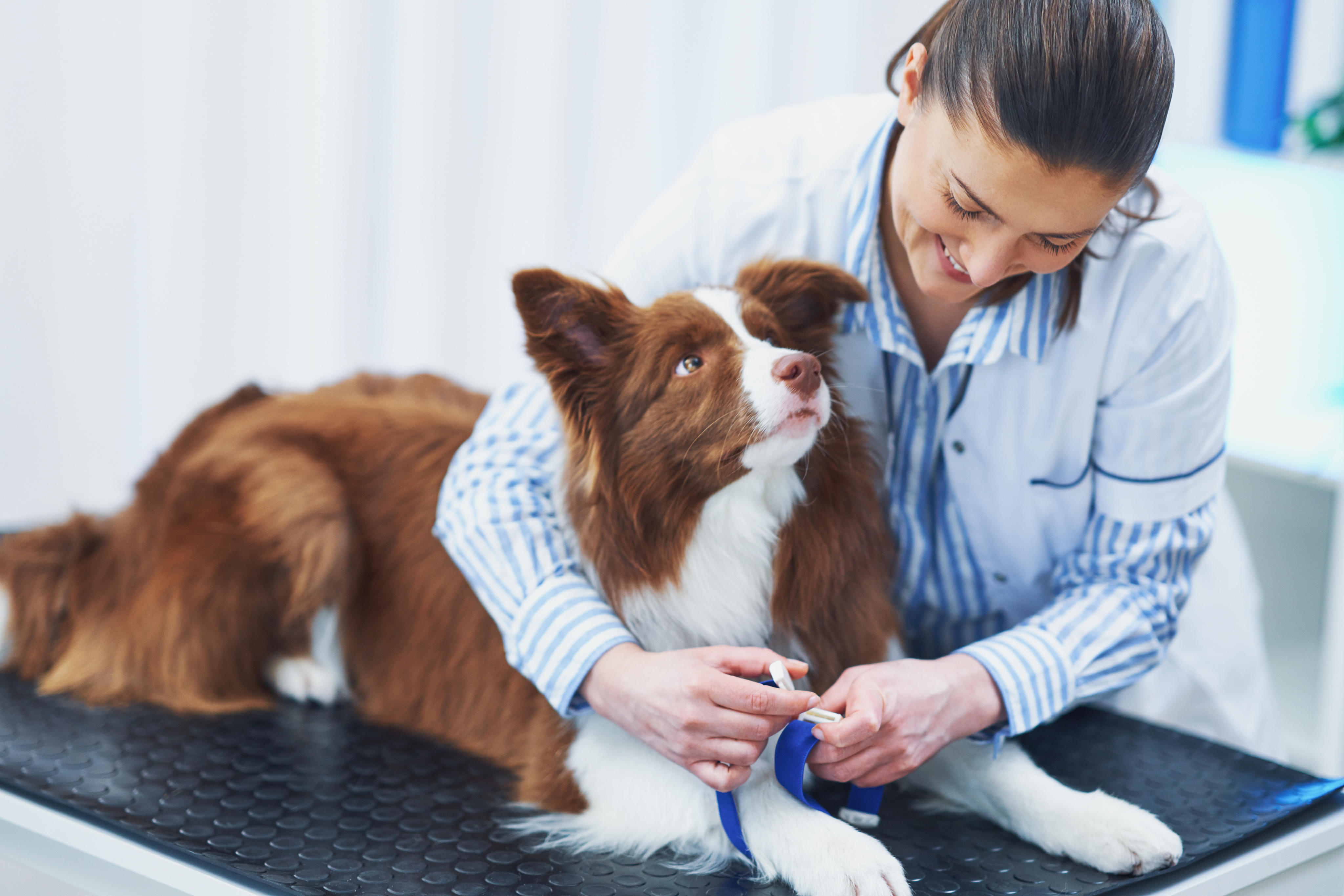Get Vaccinating Right
Get Vaccinating Right
Illness can take an enormous toll on your horse’s well-being and performance and may jeopardize its life. Properly administered vaccines represent the most economical tools available to help prevent infectious diseases.
Risks Are Everywhere
Any horse can get sick at any time. However, horses that are on the move and in contact with many horses, such as at horse shows, rodeos, the racetrack, the breeding shed, and trail rides are especially susceptible to infectious diseases. Just one infected horse can potentially spread contagious disease to many horses in a short amount of time.
In addition, travel stress can weaken the horse’s immune system, making them more susceptible to disease.
Vaccination as Prevention
Vaccinating your horse at the right time, well before exposure to viral and bacterial diseases, is extremely important. It is far more economical to take preventative measures for your horse’s health than treat a potentially life-threatening disease. In addition to a veterinarian-guided vaccination program, maintaining proper biosecurity measures will provide the best protection for your horse. Your veterinarian remains the best source for advice on an appropriate immunization program and other aspects of your horse’s health.
Check with your Veterinarian
Vaccination programs may vary depending upon needs specific to your horse. Considerations might include your horse’s environment, travel, age, gender, use, and other factors.
Make sure you consult with your veterinarian concerning an appropriate vaccination program for your horse. Keep in mind that the plan should be re-examined as time and circumstances change.
Diseases of Concern
The diseases to which horses are vulnerable vary widely. Some are obvious, others pose hidden threats. Some target younger horses while others affect all ages. The key to good health for your horse is in knowing when, how and where these enemies might strike—and how to best defeat them. The following recommendations are for adult horses. Check with your veterinarian on proper vaccination for foals, breeding animals and previously unvaccinated horses.
Core Vaccinations
Some disease threats are significant enough to justify vaccination for every horse, every year. These are the foundation of ‘core’ vaccination guidelines, as recommended by the American Association of Equine Practitioners (AAEP)1. Core vaccines have clearly demonstrated efficacy and safety, with a high-enough level of patient benefit—and low-enough level of risk—to justify their use in all horses.
These are vaccines against diseases that:
- Are endemic to a region
- Are virulent/highly contagious
- Pose a risk of severe disease
- Have potential public health significance and/or are required by law
Common signs of these diseases in the horse can vary based on disease, but most have a neurological component, which can be particularly devastating to the horse.
Eastern/Western Equine Encephalomyelitis (EEE/WEE)
Eastern/Western Equine Encephalomyelitis (EEE/WEE) are viral infections of the horse’s brain and spinal cord. The virus is maintained in reservoirs (primarily birds and rodents) and transmitted to the horse by the bite of an infected mosquito. The disease is fatal in 50-90 percent of cases.
Surviving horses often have residual mental dullness. Treatment is generally supportive because antibiotics are ineffective.
There are two types of equine encephalomyelitis commonly seen in North America—Eastern Equine Encephalomyelitis (EEE) and Western Equine Encephalomyelitis (WEE). EEE is the most prevalent and deadly. A third type, Venezuelan Equine Encephalomyelitis (VEE), is seen in Central America and northern South America but has not been reported in the United States since 1971. Eastern/Western Equine Encephalomyelitis (EEE/WEE) are considered core equine vaccinations and are indicated in the immunization program for all horses.
Clinical signs can include:
- Behavioral changes
- Moderate to high fever (102.5°F—104.5°F)
- Loss of appetite
- Depression
- Facial paralysis and weakness of the tongue
- Head tilt, ear droop, difficulty swallowing
- Ataxia (incoordination) in one or all limbs
- Muscle fasciculations (twitching)
- Recumbency (inability to rise)
- Colic
- Death
Tetanus
All horses are at risk of developing tetanus, an often-fatal disease caused by the neurotoxin produced by the Clostridium tetani (Cl. tetani) bacteria.
Spores of Cl. tetani survive in the environment for many years, resulting in an ever-present risk of exposure to horses and people in equine facilities. Tetanus is not a contagious disease but is the result of Cl. tetani infection of puncture wounds (particularly those involving the foot or muscle), open lacerations, surgical incisions, exposed tissues such as the umbilicus of foals and reproductive tract of the postpartum mare (especially in the event of trauma or retained placenta).
Clinical signs can include:
- Rigid paralysis
- Spasms of the muscles (often the jaw muscles are affected first, hence the name “lockjaw”)
- Anxious expression
- Reaction to noises or movements with spasms or convulsions
- Respiratory paralysis and dehydration that can lead to death
Rabies
Rabies is an infrequently encountered neurologic disease. While the incidence of rabies in horses is low, once signs of clinical disease appears, the fatality rate is 100%. There is no treatment for the disease, and it has considerable public health significance.
Exposure occurs through the bite of an infected (rabid) animal, typically a wildlife source such as raccoon, fox, skunk or bat. Bites to horses occur most often on the muzzle, face and lower limbs. The virus migrates via nerves to the brain, where it initiates rapidly progressive, invariably fatal encephalitis.
Download infographicRabies can look like many diseases. Clinical signs vary widely and can include:
- Colic
- Ataxia (incoordination)
- Muscle spasms
- Blindness
- Possible aggression
- Lameness
- Incontinence
- Paralysis
- Depression
West Nile Virus
West Nile Virus (WNV) is the leading cause of arbovirus encephalitis in horses and humans in the United States. According to AAEP Vaccination Guidelines, more than 25,000 cases of equine WNV encephalitis have been reported in the United States since 1999.
This virus has been identified in the entire continental United States, most of Canada and Mexico. The virus is transmitted from avian reservoir hosts by mosquitoes to horses, humans and a number of other mammals. Infected horses are not contagious.
The case fatality rate for horses exhibiting clinical signs of WNV infection is approximately 33 percent. According to the AAEP, there is data showing that 40 percent of horses that survive the acute illness caused by WNV still exhibit residual effects, such as gait and behavioral abnormalities, six months post-diagnosis2. Vaccination for WNV is recommended as an essential standard of care for North American horses.
Clinical signs can include:
- Behavioral changes
- Moderate to high fever (102.5°F—104.5°F)
- Loss of appetite
- Depression
- Facial paralysis and weakness of the tongue
- Head tilt, ear droop, difficulty swallowing
- Ataxia (incoordination) in one or all limbs
- Muscle fasciculations (twitching)
- Recumbency (inability to rise)
- Colic
- Death
Risk Based Vaccines
According to AAEP guidelines, risk-based vaccines are administered according to your horse’s specific needs and should be directed by your veterinarian. Criteria can include your horse’s age, exposure level and geography. Use of these vaccines may vary among individuals, populations and/or geographic regions. If your horse is actively training, competing or traveling—even recreationally or occasionally—you need to talk to your veterinarian about risked-based disease protection.
Equine Influenza (EIV)
Equine Influenza Virus (EIV) is one of the most common and contagious infectious diseases in the horse. It spreads rapidly through groups of horses in aerosolized droplets dispersed by coughing. It is endemic in the equine population of the United States and throughout much of the world. Equine influenza can be particularly challenging because it is a unique virus that changes over time. Just like human flu vaccines, equine flu vaccines must be periodically updated to protect against the strains of influenza currently circulating and threatening horses.
Because EIV is considered the most economically important respiratory disease in the horse, all horses should be vaccinated against EIV unless they live in a closed and isolated facility.
Download infographicClinical signs can include:
- Fever (102.5°F to 106.5°F)
- Frequent dry cough
- Nasal discharge
- Lethargy
Equine Herpesvirus (EHV or Rhino)
Equine herpesvirus type 1 (EHV-1) and equine herpesvirus type 4 (EHV-4) can each infect the respiratory tract, causing disease that varies in severity from subclinical (not apparent) to severe. EHV-4 is the most common infectious upper respiratory disease in the horse3 and is typically associated with upper respiratory disease in younger horses. EHV-1 can cause respiratory disease, late-term abortions, early foal deaths and neurologic disease. Infection of the respiratory tract with EHV-1 and EHV-4 typically first occurs in foals early in life, but recurrent infections are seen in weanlings, yearlings and young horses entering training—especially when horses from different sources are commingled.
Both EHV-1 and EHV-4 spread via coughing horses, by direct and indirect contact with nasal secretions and, in the case of EHV-1 abortion, contact with aborted fetuses, fetal/placental fluids and the placenta. Horses can have latent infections and may not show clinical signs but may experience reactivation of infection and shed the virus when stressed. Those factors compromise efforts to control these diseases and explain why outbreaks of EHV-1 or EHV-4 can occur in closed populations.
Download infographic (EHV-1) Download infographic (EHV-4)Clinical signs of the respiratory form of EHV-1/EHV-4 include:
- Fever
- Lethargy
- Anorexia
- Nasal Discharge
- Cough
EHV-1 also may cause:
- Epidemic abortion in mares
- The birth of weak, non-viable foals
- Early foal death
- Equine herpesvirus myeloencephalopathy (EHM), which is the neurologic disease associated with EHV-1 infection
Strangles
Streptococcus equi subspecies equi (S. equi var. equi) is the bacterium that causes the highly contagious disease strangles (also known as “distemper”). Strangles commonly affects young horses (weanlings and yearlings), but horses of any age can be infected. It is the most commonly diagnosed upper respiratory disease in horses 6-10 years of age5, though clinical signs may not be as severe in adult horses as they are in young horses. Infected horses can spread disease without showing clinical signs and can be a source of infection for an undetermined period of time. Proper biosecurity is key to preventing and managing disease spread.
The organism is transmitted by direct contact with infected horses or subclinical shedders, or indirectly by contact with people, water troughs, hoses, feed bunks, pastures, grooming equipment and even insects contaminated with nasal discharge from infected horses. S. equi has demonstrated environmental survivability, particularly in water sources and when protected from exposure to direct sunlight and disinfectants.
Download infographicClinical signs can include:
- Fever (102°F to 106°F) may precede other signs by 24-48 hours
- Abscesses in throatlatch and below the jaw
- Abundant nasal discharge (often thick white/yellow mucus)
- Swelling of the throat
- Difficulty swallowing
- Harsh, high-pitched breathing sound
- Cough
In rare cases with complications:
- Purpura hemorrhagica—bleeding from the capillaries which causes red spots on the mucous membranes and swelling of the limbs and head
- Muscle swelling
- Abscesses spread to other parts of the body—known as bastard strangles
Potomac Horse Fever (PHF)
Caused by Neorickettsia risticii (formerly Ehrlichia risticii) and originally described in 1979 as a sporadic disease affecting horses residing in the eastern United States near the Potomac River. Potomac Horse Fever (PHF) has since been identified in various other geographic locations in the United States and Canada. The disease is seasonal, occurring between late spring and early fall in temperate areas, with most cases in July, August and September at the onset of hot weather.
If PHF has been confirmed on a farm or in a particular geographic area, it is likely that additional cases will occur in future years. Foals appear to have a low risk of contracting the disease.
Clinical signs can include:
- Fever
- Mild to severe diarrhea
- Laminitis
- Mild colic
- Decreased abdominal sounds
Equine Viral Arteritis (EVA)
Equine Viral Arteritis (EVA) is a contagious disease caused by equine arteritis virus, an RNA virus that is found in horse populations in many countries. While typically not life-threatening to otherwise healthy adult horses, EVA can cause abortion in pregnant mares and, uncommonly, death in young foals; it can also establish a long-term carrier state in breeding stallions. While various horse breeds appear equally susceptible to EVA, the prevalence of infection can vary widely, with higher seropositivity rates occurring in Standardbreds and Warmbloods.
Abortion is a frequent sequel to infection in the unprotected pregnant mare. Young foals exposed to EVA can develop a life-threatening pneumonia or enteritis.
Clinical signs, if they occur, typically develop 3-7 days post-infection and are variable but may include:
- Fever
- Depression
- Anorexia
- Dependent edema (lower limbs, scrotum and prepuce or mammary glands)
- Localized or generalized urticaria (severe itching or hives)
- Swelling above or around the eye
- Conjunctivitis
- Serous to mucoid nasal discharge
Rotavirus
Rotavirus is a major cause of infectious foal diarrhea and has been documented to cause 50 percent or more of foal diarrhea cases in some areas. While rotavirus diarrhea morbidity can be high (50 percent of susceptible foals), mortality is low (<1 percent) with veterinary intervention. Equine rotavirus is transmitted via the fecal-oral route and damages the small intestinal villi, resulting in cellular destruction, maldigestion, malabsorption and diarrhea.
Vaccination of mares results in a significant increase in foals’ rotavirus antibody titers. Field trials of rotavirus vaccination in pregnant mares have shown a decrease in incidence and severity of foal diarrhea on farms that historically had annual rotaviral diarrhea cases. According to AAEP, other studies have shown increased rotavirus antibody in vaccinated mares’ colostrum.
Anthrax
Anthrax is a serious and rapidly fatal septicemic disease caused by proliferation and spread of the vegetative form of Bacillus anthracis in the body. Infection is acquired through ingestion, inhalation or contamination of wounds by soil-borne spores of the organism. Anthrax is encountered only in limited geographic areas where alkaline soil conditions favor its survival. Vaccination is indicated only for horses pastured in endemic areas.
Botulism
Botulism is caused by the exotoxin of Clostridium botulinum and typically occurs when horses eat decayed vegetable matter, animal carcasses or improperly prepared haylage or silage. Horses are extremely susceptible to the toxin, which is the most potent biological toxin known. It causes neuromuscular weakness that progresses to paralysis.
Death is due to respiratory paralysis. Treatment with antibiotics or antitoxin is helpful if given early in the course of the disease.
Clinical signs, if they occur, typically develop 3-7 days post-infection and are variable but may include:
- Weakness
- Muscle tremors
- Protruding tongue
- Stumbling and collapse
- Frequent lying down
- Drooping tail
- Constipation
- Paralysis
What is Havlogen®?
Havlogen is Merck Animal Health’s exclusive adjuvant:
- Produces a booster effect stimulating high, long-lasting levels of protection through the slow release and gradual absorption of antigen
- Allows concentration of antigen (a substance to which an immune response is mounted) while minimizing adverse reactions
- Stays in suspension and doesn’t settle to the bottom of vial for consistency and potency in each dose
Antigen Purification System™ (APS)
A vaccine must be safe. Merck Animal Health’s Antigen Purification System™ (APS) works to remove unwanted protein and cellular debris from the vaccine antigen. By purifying the vaccines in this method, we reduce the debris that can cause undesirable injection-site reactions in the horse.
By combining our proprietary Antigen Purification System™ (APS) and exclusive Havlogen® adjuvant, we are able to produce a line of killed vaccines that are highly efficacious and have an exceptional safety profile shown to be 98% reaction free in field safety trials.6
What to Expect After Your Horse is Vaccinated
While the benefits of vaccination far outweigh the risks, it is important to have realistic expectations when vaccinating your horse. After your horse is vaccinated, monitor your horse closely for 1-2 hours and allow your horse free exercise if possible.
The goal of administering a vaccine is to stimulate an immune response to help protect the horse from disease. This response creates a cascade of events within the immune system to ward off disease. As a result, some horses may experience mild and transient side effects shortly after vaccination, including:
- Low-grade fever (less than 102°F)
- Decreased appetite
- Fatigue or lethargy
- Mild heat or swelling at the injection site
- Injection-site tenderness
These signs usually appear within 24 hours after vaccination and typically resolve within 24 to 48 hours.
More severe systemic reactions are very rare and can include sweating, elevated heart rate, respiratory distress, colic or development of hives. Call your veterinarian immediately if you see any of these signs.
Adverse reactions are not always predictable and are inherent risks of vaccination. Therefore, it is recommended that horses not be vaccinated in the two weeks prior to shows, performance events, sales or domestic shipment. Some veterinarians may elect not to vaccinate horses within three weeks of international shipment.
It is best to have your veterinarian administer vaccinations. They will be most familiar with your horse’s medical history, and well versed in proper vaccine handling and administration techniques and will be prepared to handle more severe reactions.
Vaccination + Biosecurity is Best!
Vaccinations are only one part of a good infectious disease control program. Proper management and biosecurity practices along with vaccination can lower the incidence and severity of infectious diseases.
Proper Management Practices
- Reduce exposure to pathogens (e.g., keep buckets & equipment scrubbed clean)
- Avoid contact with non-resident and sick horses
- Isolate all new entries or horses returning to the stable from travel
- Isolate any horse with elevated temperature or occurrence of unprovoked coughing
- Check temperatures at least once daily (normal = 99°F – 101°F)
- Avoid using community water tanks
- Wash hands after touching other horses (hand sanitizers in absence of soap and water)
- Spray/disinfect stalls at shows
- Reduce stress factors (e.g., avoid long distance hauling)
- Keep in well-ventilated stalls and haul in well-ventilated trailers
- Follow a good nutritional feeding program
Infectious Disease Control
- Enhance resistance to infectious disease by vaccination
- Reduce exposure to infectious agents in the horse’s environment:
- High population density situations like breeding farms, sales or boarding facilities and race tracks are often ideal places for transmission of infectious disease
- Examples of factors that can contribute to increased risk of infectious disease include:
- Stress
- Over-crowding
- Parasitism
- Poor nutrition
- Inadequate sanitation
- Inadequate ventilation
- Contaminated water
- Inadequate rodent, bird and insect control
- Movement of people, horses, vehicles and/or equipment on and off facilities during infectious disease outbreaks
Vaccination Efficacy
- Vaccines alone are not sufficient for the prevention of infectious disease
- Vaccines serve to minimize the risk of infection but cannot prevent disease in all circumstances
- Vaccinating your horse at the right time, well before exposure to viral and bacterial diseases, is extremely important
- Protection is not immediate after administration
- Although rare, there is potential for adverse reactions despite proper handling and administration of vaccines
Storage and Handling
- Proper storage and handling is critical to vaccine efficacy and safety
- Keep vaccines refrigerated and out of sunlight
- Follow manufacturers’ instructions
References
- Wilson JH, Davis A, Bender JB, Minicucci, LA. Residual Effects of West Nile Viral Encephalomyelitis in Horses. In: 49th Annual Convention of the American Association of Equine Practitioners, 2003, New Orleans, Louisiana, (Ed.)
- Merck Animal Health and University of California, Davis (Nicola Pusterla, DVM). Infectious Upper Respiratory Disease Surveillance Program. Ongoing research 2008-present.
- Equine Herpesvirus-1 Consensus Statement. J Vet Intern Med 2009; 23:450-461.
- Merck Animal Health and University of California, Davis (Nicola Pusterla, DVM). Infectious Upper Respiratory Disease Surveillance Program. Ongoing research 2008-present.
- Data on file. Merck Animal Health.




 Go To United States
Go To United States Algeria
Algeria Argentina
Argentina Australia
Australia Austria
Austria Bahrain
Bahrain Belgium (Dutch)
Belgium (Dutch) Brazil
Brazil Canada (English)
Canada (English) Chile
Chile Colombia
Colombia Croatia
Croatia Czech Republic
Czech Republic Denmark
Denmark Ecuador
Ecuador Egypt
Egypt Finland
Finland France
France Germany
Germany Greece
Greece Hungary
Hungary India
India Indonesia
Indonesia Iraq
Iraq Ireland
Ireland Israel
Israel Italy
Italy Japan
Japan Jordan
Jordan Kuwait
Kuwait Lebanon
Lebanon Malaysia
Malaysia Mexico
Mexico Morocco
Morocco Netherlands
Netherlands New Zealand
New Zealand Norway
Norway Oman
Oman Panama
Panama Peru
Peru Philippines
Philippines Poland
Poland Portugal
Portugal Qatar
Qatar Romania
Romania Russian Federation
Russian Federation Saudi Arabia
Saudi Arabia South Africa
South Africa South Korea
South Korea Spain
Spain Sweden
Sweden Switzerland (French)
Switzerland (French) Taiwan
Taiwan Thailand
Thailand Tunisia
Tunisia Turkey
Turkey Ukraine
Ukraine United Arab Emirates
United Arab Emirates United Kingdom
United Kingdom Uruguay
Uruguay Yemen
Yemen Global
Global